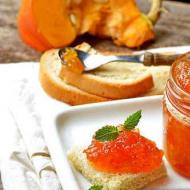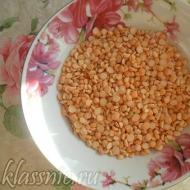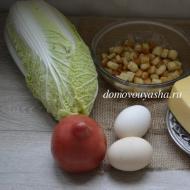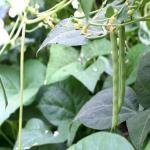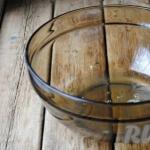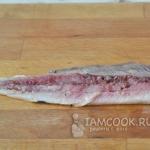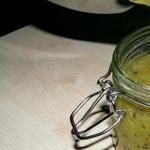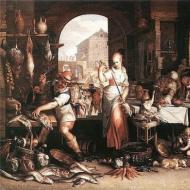
Red pollenhead - Cephalanthera rubra. Pollenhead red
RED POLLENHEAD Cephalanthera rubra (L.) Rich. HĔRLĔ POLLENHEAD
Status. I category. Endangered species. Relic. Listed in the Red Books of the USSR and the RSFSR.
Description. A perennial herbaceous plant of medium size (30-55 cm) with a vertical rhizome and fine glandular pubescence. The entire stem bears oblong leaves. Large lilac-pink flowers are collected in a sparse inflorescence. Blooms in May.
Spreading. European part of Russia. In the Chuvash Republic it is found in the Volga region.
Habitats. Deciduous forests, clearings, along forest roads.
Limiting factors. It is destroyed as an ornamental plant and during economic use of the territory.
Security measures. Prohibition of collecting flowers and digging up plants. Protected in Zavolzhye Park.
Information sources: Red Book of the USSR, 1978; Red Book of the RSFSR, 1988; Kudanova, 1965; Teplova, 1998, 2000.
Compiled by: A.V. Dimitriev, N.A. Krasnov. 
Gardeners are very lucky that red pollenhead is a long-lived plant. But if the gardener is also a traveler, then he will be able to watch the flowering of this miracle of nature in the Crimea, Russia, the Caucasus, as well as in the mountains of Asia and Europe. They never grow in large numbers, are scattered across different areas, and sometimes form a small clan. They choose dry broad-leaved and coniferous forests for living; sometimes they can live in mixed ones. The pollen head is also found near bushes, on mountain plains, in general, where the soils are endowed with a large amount of limestone. They love the sun very much; they tolerate shade with great difficulty.
The rhizome of the plant is smooth and in an upright position; in some areas of its habitat, small branches sprout that penetrate into the soil. The stem is straight, sometimes inclined, at the top it is covered with fine down and leaves, which reach a length of 12 cm and are slightly sharp at the end. The inflorescence of the pollen head is quite voluminous, because it can combine 8 flowers at the same time, and is pubescent along its axis. The bracts have an even ovary; they themselves are lanceolate. The flowers are quite long - 2.5 cm, painted in a beautiful lilac color with a pink tint, and the lip is white, which gives the plant additional beauty. It is worth noting that during the flowering period the plant smells very much. The perianth leaves are covered with down and have the shape of a bell. They grow to the same length as the top ones - 2.5 cm, the inner leaves are slightly smaller. The lip has approximately the same dimensions as the outer leaves, differs only in color, since the front is yellow. The flowering process occurs at the end of July.
Pollenhead can reproduce in two ways: vegetatively and by seeds. The roots of the plant can be thin or thick. It is on the thin roots that shoots are formed, which will be useful for reproduction in the future. At home, gardeners use the vegetative method, but in the wild the plant reproduces by seeds, which are scattered throughout the area by insects. The flowers of the red pollen head do not contain any attractive food for insects, so the plant resorts to a trick: it blooms bells, with the help of which they attract with their appearance.
When bad weather conditions come to the habitat, the plant hides under the surface of the earth, where it can live for about 20 years. Since the roots of pollenhead are very thin and fragile, gardeners have to “sweat” a lot for the plant to reach flowering. When planting, it is best to add pieces of bark from coniferous trees.
Family: Orchidaceae, Orchidaceae
Rarity status category: 1
Status
I category. A very rare European-Mediterranean species with a declining population, decorative, listed in the Red Data Books of the RSFSR and the USSRDescription
A perennial plant with an ascending rhizome, stems 25-60 cm high with 5-8 leaves and a sparse inflorescence of 4-8 flowers. The flowers are large, purple, the lip is white, with a reddish border at the top. Pedicels and ovaries are finely pubescent. Reproduction is by seed and vegetative in the presence of symbiont fungi in the soil, blooms in June-July.Spreading
Northwestern regions of the region. The southernmost point - Belyaevsky district, the city of Camel - the footHabitats
Oak forest - on clay, limestone soil.Limiting factors
Small population size, population collection, economic use of the territory.Security measures
Species in the Red Book of the USSR. It is necessary to monitor the state of populations and organize protection within natural monuments (Vellyud town, Belyaevsky district).Information sources
1. Red Book of the USSR, 1978; 2. Red Book of the RSFSR, 1988; 3. Savoskina, Voloshina, Mushinskaya, Shepturova, 1992.Cephalanthera rubra (L.) Rich., 1818 Class Monocots Liliopsida Family Orchidaceae - Orchidaceae Category and status: III - rare European-Mediterranean species in the region. Protected in the Volzhsko-Kama, Shigrovsky and other nature reserves of Russia. Listed in the Red Data Books of many countries, as well as in Appendix II of the CITES Convention.
Description and difference from related species The stems are straight or inclined, the rhizome is almost vertical, sometimes weakly branched, penetrating deeply into the soil. The stems, pedicels, tepals and ovary are covered with small glandular hairs. Leaves number 5-8, oblong-lanceolate or lanceolate, up to 12 cm long. Inflorescence with 4-8 (12) arranged flowers. The flowers are deflected, lilac-pink, the lip is white, reddish-edged. No related species were noted in the flora of the Belgorod region.
Information on biology and ecology Perennial 25-60 cm tall. Blooms in June - July; bears fruit in July-August. Propagated by seeds and vegetatively by forming shoots on the roots. Seed germination is noted only in the presence of the fungus, and in subsequent years the plants are closely associated with the fungus. Grows in deciduous forests, mainly on calcareous soil.
Distribution and occurrence P.; Ts.; 3.(Carp.; Dnieper.; Mold.); V. (Lower-Don; Trans-Volga); K. - Deciduous forests, shrubs. - General distribution: Caucasus, Wed. Asia; Scand., Wed. and Atl. Heb., Middle, Maloaz, Iran. - IN . known from Belgorod (Solomino oak grove); Novooskolsky (Khanova beam), Shebekinsky (south of Shebekino) districts.
Limiting Factors Forestry activities, grazing livestock, collecting plants for bouquets, trampling.
Necessary security measures Prohibition of collecting flowers and digging up plants, monitoring population dynamics.
Necessary security measures Protected within the Belogorye nature reserve.
Information sources:. Mayevsky, 1964: 678; Flora of the European part of the USSR. T. 2, 1976: 26; Gubanov et al., 2002: 490; Red Book of the Russian Federation, 2002: 261; Vakhrameeva et al., 1991: 170-171;. Zolotukhin, 1997; Gusev, 2003; Takhtadzhyan, 1975: 90; Kolchanov, 1999: 21; Alekhine, 1925; Sukachev, 1903: 213; Elenevsky et al., 2004: 32. Compiled by: text - A.F. Kolchanov, E.V. Maslov's map diagrams - A.F. Kolchanov, M.Yu. Tretyakov Photo: A.F. Kolchanov

